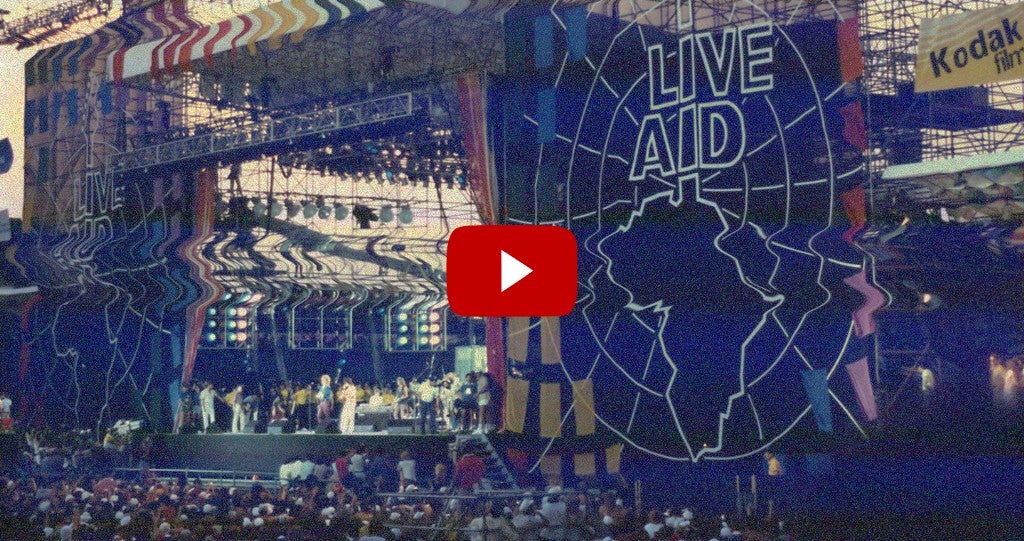While you may not know Japanese manufacturer Funai Electric by name, you surely know its products: Funai holds the rights to marketing electronics under the Magnavox, Emerson, Sanyo and Kodak brands. Just a few weeks ago, Funai announced that it was about to stop production on all VHS VCRs. The last man standing when it came to VCRs, Funai had finally made it official: 40 years after the introduction of the VHS, the VCR was dead.
At its peak, the VHS/VCR combo wasn’t just for archiving home movies and renting videos at Blockbuster; it was a medium for archiving your favorite TV shows—much to the chagrin of Hollywood, which did not want us to have the ability to record things off TV. In 1976 Universal Studios sued Sony, the creator of VHS rival Betamax, to remove the device’s recording functionality. While Sony prevailed at first, Universal won an appeal, and took its argument all the way to the United States Supreme Court in 1983. A year later it was official: Recording TV shows to watch later was deemed fair use, not copyright infringement — making way for TiVo, DVR and, yes, even streaming. The way we watch TV now is defined by this ruling.
Tape trading had always existed in various forms — going back to the launch of the VCR and, in some circles, even earlier with audio recordings on cassette tapes and reel-to-reel recorders. It started with people seeking things they wouldn’t have access to themselves. For example, before the mid-‘80s, professional wrestling was highly regionalized, so if you wanted to see your favorite stars working outside of your area, you’d have to find a fellow fan with a recording — which required meeting each other by mail through fan clubs. As a result, the hardcore fandom had to become well-versed in technology, developing a zest for preserving old cards. For a type of show that never had reruns, it was crucial.

It was only with the launch of YouTube that physical tape trading slowed down, as dumps of content — from all types of places — started flooding the internet. Today, much of YouTube is VHS-sourced content. Whether it’s those valuable professional wrestling matches or a 1983 clip from Star Search, it often comes from those longtime tape traders. Richard Land, a collector turned YouTuber from the United Kingdom, is one the last bastions of the old-school tape traders. He’s got 2,352,742 views to his name on YouTube and among friends (and now YouTube subscribers), he’s known as the guy who finds the most obscure old WWF (now WWE) shows — including from far-flung international broadcasts, many of which English-speaking fans never even knew existed.
In an age when more and more things are streaming such that even DVDs are inching toward irrelevance, there are plenty of basements filled with dusty VHS tapes waiting to perhaps unleash something the internet has never seen. Even with WWE — a huge company with an expertly indexed digital library — things fall through the cracks, and that’s when fan archivists like Land become valuable. In 2013, the wrestling empire’s home video division was putting together a DVD set where Bret “Hitman” Hart selected some of his favorite performances from his own career. One of the picks was a one-on-one encounter with Andre the Giant, which took place on an Italian TV special. But because Tele+2, the Italian TV network, shot the show, WWE didn’t have the footage. So they did what any self-respecting wrestling fan would do: Took to the internet, found the version Land had uploaded, and used that. Land had even gone the extra mile to edit together two different sources so that the clip’s quality drastically improved midway through.
https://www.youtube.com/watch?v=3kG6B3iauUo
Has recognition like that from the WWE finally justified Land’s tape-collecting hobby? “Definitely, yes,” he says. “I just can’t believe nobody else tried to track the footage down before, or that the Italian traders, who had it, didn’t put it on YouTube themselves. I guess they didn’t see the value or rarity.” He’s moved onto trading DVD conversions of his VHS tapes, continuing to pursue the odds and ends of the WWE video collecting world and putting them on YouTube.
VCRs and the tape traders who love them also played a pivotal role in the preservation of one of the biggest pop culture events of the 20th century: Live Aid. The 1985 all-star concert in London and Philadelphia that raised money for famine relief in Africa allegedly had more than a billion viewers worldwide. With over 1 billion people worldwide having watched the live broadcast, there was arguably more demand for it than any other media lacking an official release. With that demand came bootleg sales in all corners of the internet, which pissed off concert organizer Bob Geldof, who finally decided to release an official DVD set.
But there was one problem: To emphasize the one-off nature of the event and prevent any future rights disputes, Geldof had asked every participating broadcaster to erase the tapes as soon as the show was over. Luckily, the BBC had ignored his requests and kept their tapes of everything — including multi-track recordings of the audio. The BBC had run multiple Live Aid retrospectives and had instituted a policy of keeping everything a few years earlier, so Geldof didn’t have to turn to the tape traders.

American TV channels, on the other hand, obeyed Geldof’s instructions; as a result, footage from the Philadelphia concert is a mix of whatever the BBC had and B-roll tapes found in one of MTV’s storage facilities. Throw in Led Zeppelin refusing to sign off on their performance’s inclusion (they decided to donate the royalties from their own upcoming DVD instead); numerous songs being excluded due to tiny portions missing; and the omission of the day’s many non-music segments, and you get an incomplete presentation that doesn’t at all reflect what everyone saw in 1985. Basically, it was a mess. Even if you only count the main concerts and not the host chatter or the international contributions, the official DVD set was missing a whopping 80-plus songs.
So what about those tape traders?
In 1985, blank videotapes weren’t super-expensive, but the price (and space) was still a limiting factor in videophiles deciding which shows to hold onto. Live Aid, being the event of all events, had a lot of people taping it off TV (and the radio) from numerous sources worldwide. Who needs Geldof’s spiteful, cobbled-together DVD box set? YouTube has all the Live Aid you need — in numerous permutations, with a few users having channels devoted entirely to the concerts.
Just take a look at the playlist that “LiveAidWizard” created of the songs missing from the official set. The second song, The Style Council’s “You’re The Best Thing,” is featured a whopping four times: The BBC version, MTV’s cable feed, the ABC-produced broadcast syndication feed, and the BBC’s 10th anniversary special edit.
Without VCRs and the people who love them, they would still be no way to see Duran Duran’s infamous performance of “View to a Kill” — so pitch-challenged and messy that the group broke up soon after for about five years. Without VCRs, and the Supreme Court decision that saved them, would YouTube even exist as the beloved nostalgia factory it has come to be? Sure, DVRs may be convenient, but when you’re deleting that recording of the Emmys to make room for Grey’s Anatomy, there’s always a chance you’re deleting it forever.

